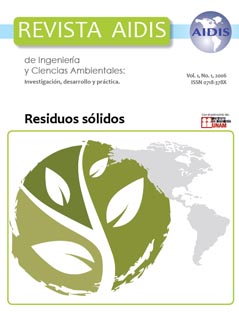Emisiones de mercurio gaseoso total en sitios de disposición final de residuos sólidos municipales en la Zona Metropolitana de la Ciudad de México
Main Article Content
Abstract
Mercury is a potentially toxic element which gas phase has a life between 0.5 to 2 years, this allows it to travel great distances and to pollute by dry deposition distant regions to its place of origin. Potential sources of gaseous mercury with little studies in Mexico are the final disposal sites (SDF) of urban wastes (RSM). It is well know that several devises with mercury are discarded within the RSM that are disposed in the SDF, were the temperatures are enough high to volatilize the mercury. To assess the total gaseous mercury contribution (TGM) by the SDF of RSM, five sites located in the Mexico City Metropolitan Area with different stages of operation were studied. Samples of landfill gas, leached and ambient air from the surroundings were taken to analyze its mercury content. The results they indicate that in this stage of the study it is not possible to be correlated the levels of emission with the stage operation, nevertheless is evidence of importance of these sites like steam sources of mercury to the atmosphere
Article Details
How to Cite
[1]
de la Rosa, D.A., Volke-Sepúlveda, T. and Solórzano, G. 2009. Emisiones de mercurio gaseoso total en sitios de disposición final de residuos sólidos municipales en la Zona Metropolitana de la Ciudad de México. Revista AIDIS de ingeniería y ciencias ambientales: Investigación, desarrollo y práctica. 1, 1 (Nov. 2009).
